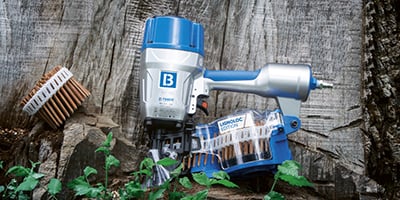From an image of a single house fire to memories of historic disasters like the Great Chicago Fire or the 2020 California Wildfires, the danger fire can pose to our homes and businesses is seared into our collective memories. Many people believe that modern construction materials like steel and concrete provide buildings with the utmost fire resistance. But what if we told you that modern construction solutions are beginning to incorporate more wood into new construction?
As engineers, architects, and builders alike begin to expand their knowledge of wood in the build environment we have learned some surprising things about fire safety and wood construction. Today we look at how one innovation – mass timber construction – stands up to fire.
What is Mass Timber?
Mass timber is a new category that can revolutionize how we build structures. Comprised of multiple solid wood panels that are nailed or glued together, mass timber can provide exceptional strength and stability to many construction projects, and in some cases, it is even more fire resistant than steel or concrete. In the United States, mass timber construction can be up to 18 stories tall!
The term mass timber encompasses a variety of products, each with their own use cases. Glue-laminated beams, nail-laminated timber (NLT), and cross-laminated timber (CLT) are all examples of the product which use lumber boards that have been trimmed and kiln-dried before being fixed to each other to create layers that can be as large as 18-feet long by 98-feet wide. These slabs of wood can match, or even exceed, the construction performance of steel and concrete.
Fireproof?
When we think about wood, fire safety is not usually the first thing that comes to mind. This is because, in the United States, we often associate wood buildings with stick-frame construction and the use of 2x4s and plywood.
However, mass timber is quite difficult to ignite due to its composition. Therefore, mass timber offers a distinct advantage over other construction materials such as steel or concrete in a fire. As expected, during a fire the outer layer of mass timber will char creating what is called a “char layer.” The char layer acts as an insulator for the inner portions of the mass timber, thus protecting the core of the wood section. As a result, in the event of a fire the inner layers of mass timber can remain pristine, allowing the interior of the mass timber construction to retain structural integrity for several hours even in an intense fire.
It should be noted that there is still debate surrounding how best to optimize the production of different types of mass timber. CLT made with 35mm laminations achieves the desired fire resistance described above. The production of CLT with 19 to 25mm laminations has begun in the U.S., but there’s limited research regarding the fire-resistant properties of this thinner CLT.
Innovative Mass Timber Fasteners
Nails made from wood are one of the oldest known fasteners in the world and wooden nails are the perfect match for mass timber construction. The BECK Group has introduced its revolutionary patented LignoLoc® wooden nails -- the first collated nail made of wood. LignoLoc® nails are made of indigenous beech wood and compressed with resin. LignoLoc® nails can be driven into any solid structural timber with the LignoLoc® Pneumatic Nailer, without any pre-drilling, to form an inseparable bond with the timber. This can save you a lot of time, and money, on installation. Plus, you and your customers will love that LignoLoc® wooden nails do not cause unattractive wood discoloration or leave any traces of corrosion, such as those left by steel nails.
Whether you and your team are just beginning to explore the use of mass timber in new construction or are seeking to incorporate new building techniques into your repertoire, versatile patented LignoLoc® collated wooden nails and the LignoLoc® Pneumatic Nailer – the patented LignoLoc® Wooden Nail System from BECK - combines power and precision to make fastening a breeze.
.svg.png)


